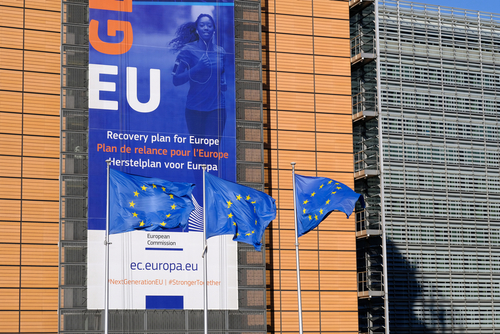
As the vote to give the country a new government approached, a heated debate was ignited in Italy on NRRP and whether or not to ask for its reshaping at the European level.
But what is the NRRP and why is it at the centre of the political debate?
The NRRP (National Recovery and Resilience Plan) is the document that each member state must prepare in order to access Next Generation EU (NGEU) funds, the tool introduced by the European Union for post-Covid-19 pandemic recovery to revive the economy in the member states and to move towards a more sustainable and digital economy.
The NGEU is a EUR 750 billion package of grants and loans, the central component of which is the Recovery and Resilience Facility (RRF), which has a duration of six years, from 2021 to 2026, and a total size of EUR 672.5 billion (312.5 grants, the remaining 360 billion low-interest loans).
Italy is the main beneficiary with 191.5 billion euro of funds divided between grants (68.9 billion) and loans (122.6 billion). To these must be added some EUR 13 billion from the programme Recovery Assistance for Cohesion and the Territories of Europe (React-Eu) and the additional EUR 30.62 billion allocated by the Draghi government, which will be used to complete the projects contained in the Recovery plan.
In total, therefore, the resources that Italy will manage will be over EUR 235 billion.
The Italian Plan is divided into 6 ‘missions’:
Digitisation, Innovation, Competitiveness, Culture and Tourism, Green Revolution and Ecological Transition, Infrastructure for Sustainable Mobility, Education and Research, Inclusion and Cohesion, and Health, with the first two alone absorbing around 60% of the resources.
This is an enormous figure, which determines how crucial it is for Italy to succeed in meeting all the parameters and deadlines set, but which immediately shows an anomaly: health has had the smallest allocation after a crisis that has shown its limits and shortcomings.
Currently, after the first two phases completed with the achievement of the objectives, the process to reach the December objectives is delayed due to the failure of the current government to activate most of the implementing decrees, and these days it will proceed in forced stages to conclude what was planned, the risk therefore that they will not be achieved, as admitted by the undersecretary to the Presidency of the Council, Roberto Garofoli, are almost nil.
But where does the idea of asking for a remodelling of the plan come from?
According to centre-right leader Giorgia Meloni, the elaboration of a ‘new plan’ is a more than logical choice if one considers that the recovery had been elaborated in function of a post-Covid-19 recovery before the energy and political crisis caused by Russia’s invasion of Ukraine.
In fact, the new scenarios that arose, first and foremost the increase in gas and electricity prices, rapidly triggered an unstoppable rise in inflation and a disproportionate increase in energy costs throughout Europe and, naturally, in Italy.
Imagining to reshuffle part of the resources in order to allocate them to new critical scenarios, particularly in relation to the ecological transition, which to date appears difficult to implement if we consider that following the war in Ukraine it was decided to reactivate coal-fired power stations to make up for the energy difficulties, actually appears to be a common-sense choice and one that is in keeping with the real situation.
It should be added that, as already mentioned, a large part of the resources are a loan and not non-repayable, so it seems unlikely that a loan could not be renegotiated, albeit within certain guidelines and guaranteeing, as also envisaged in the political programme of the centre-right coalition, the full use of the resources of the NRPP even by making up for the current delays in implementation.
In short, a choice that we could define as one of real politik for those who are preparing to govern a nation in economic crisis such as Italy, foreseeing a possible realignment of resources based on the scenarios of the moment, instead of considering what is written and presented as an untouchable dogma.
Therefore, to ask oneself the question whether the plan presented is really untouchable seems more than legitimate if not right.
Giorgia Meloni, leader of Fratelli d’Italia, the centre-right party currently listed as Italy’s number one party, thinks it is necessary and that reshaping is more urgent than ever.
In contrast, Gianni Letta, secretary of the Partito Democratico, Italy’s main centre-left party, believes that the PNRR is untouchable in its current formulation, a formulation to which his party largely contributed during the Draghi government.
Personally, we think that the ability to adapt choices to real situations is one of the main skills a politician should have, which is why we believe that considering a reshuffle is a logical and right choice, and that it would not trigger any ‘political earthquake’ within the EU, except by those who have always tried to ‘remote control’ Italy’s economic-political choices, with the approval of the left and its leaders.
Author: FeMo



 Subscribe
Subscribe